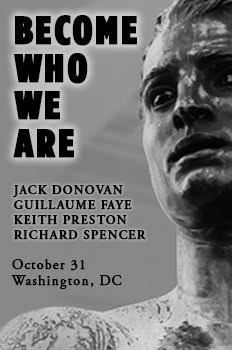I would argue that—at least theoretically—a person can be, at the same time, both pan-Europeanist and Nordicist, or pan-Europeanism and pan-Slavist, pan-Germanist, ethnic nationalist, etc., so long as the all the latter “ists” in question are of a “defensive” nature, and that the pan-Europeanism respects and values narrower particularisms. Of course, even if this is true, it is natural to expect that certain levels of ethnic interests[1] would be more important to an activist than others (e.g., a Russian may be a Russian nationalist first, a pan-Slavist second, and a pan-Europeanist third).
More importantly, even if this melding of activist identities does not often occur in the real world, it should, at minimum, be possible for individuals identifying themselves solely as pan-European or Nordicist or pan-Slavic or pan-German or Basque nationalist-separatist or English/British nationalist to productively and respectfully work together to achieve common objectives, even if there are important points of disagreement remaining between them. Indeed, a British nationalist had the following comments on this subject:
I think it is perfectly feasible for a British Nationalist to have a hierarchy of levels within which he or she operates and thinks when it comes to the rest of the world around us and its structure and integrity. Ethno British Nationalism need not conflict to any severe degree with racial nationalism as I see it to be, because I don’t believe “racial nationalism” seeks to forge the ties mentioned above, just care for and preserve our fellow Nationalists and European peoples by supporting their right to do what we are trying to do.
A calm and rational approach to looking after ourselves first whilst keeping an eye out and an interest in (and a support to) our European counterparts and the order of the world around us is no bad thing in my view, but yes, of course, we have to be careful of what others commonly perceive the definitions to be, and ensure that we split off what to me is “traditional” Nationalism from anything that aims to go further than that.
Does caring about their plight and the wider European nation states and the dwindling European racial presence on planet Earth make me somehow beyond the pale or some wild extremist or supremacist? I do not believe so.[2]
This is reasonable, and stands in contrast to certain British National Party operatives who believe that any concern for the broader race must be detrimental to ethnic nationalism. The opposite is more likely, since a nationalist Britain will more secure in a European, white Europe, and infinitely less secure as a lone white island in a continental sea of color.
Although we should never let the opponents of preservationism define us, it is still interesting that “divide and conquer” is a tactic used against nationalists. One suspects that our opponents would most dread the varied European peoples coming to an agreement on fundamental interests, to work together for Western survival.
Indeed, if we reach the point in which Basque separatists can work with Spanish nationalists, Irish Republican nationalists with Ulster Protestant Unionists, Padanian separatists with Ausonian nationalists, Flemish separatists with Wallonian nationalists, Hungarian nationalists with their Romanian counterparts, pan-Slavists with pan-Germanists, and American pan-Europeanists with American Nordicists—all in the cause of white, Western survival—this will be a development which will give the enemies of white, Western survival cause for grave concern.
Perhaps pan-Europeanism is best viewed as a flexible meme and not as a rigid set of specific polices; it generally promotes the idea of mutual respect among the varied European peoples, and therefore attempts to search for solutions that will allow for the biological and cultural preservation of all Europeans worldwide.
Pan-Europeanism asserts that all persons of European descent should have a “seat at the table” when decisions are made about the fate of the West and its peoples. Pan-Europeanism, properly considered, can be consistent and compatible with concerns about narrower ingroups: Nordicism, pan-Slavism, pan-Germanism, or whatever ethnic or subracial nationalism one wishes to consider.
What pan-Europeanism introduces to these other ideologies is an additional concern for the broader European family. What if an individual does not care about the broader family of Europeans, and has an interest solely in his ethnic group or subrace? There is certainly nothing inherently wrong with that; everyone has the right to define the limits of his ingroup as he sees fit, and invest in that defined ingroup as is appropriate.
However, the purpose of this essay is not to proselytize, but rather to explain how a specific strain of pan-Europeanism is compatible with the preservation of narrower particularisms, and to place the history of pan-Europeanism within the context of the overarching objectives of “White Nationalism.” I will start with the issue of ethnic interchangeability and panmixia, and move on to an examination of other facets of pan-Europeanism, including a very brief historical survey.
Interchangeability & Panmixia
One meme asserts that pan-Europeanism means that all whites are “fungible/interchangeable.” I do not believe that most responsible pan-Europeanists hold that view. I certainly do not. I believe in a mixture of racial conservationism—making certain that extant ethnoracial stocks are preserved in significant numbers in specific territorial states—and racial palingenesis—which supports eugenics as well as the acceptance of new, stabilized Euro-breeds that may occur in the European Diaspora and that can constitute new ethnies and expand the range of European-specific genetic and phenotypic biological diversity.
When the two ideas are in conflict, racial conservatism trumps racial palingenesis, since the original stocks, once lost, can never be recovered. Hybridization, if it occurs in Diaspora regions, should be carefully monitored so as to create productive new stabilized strains while, at the same time, not resulting in the elimination of parental stocks. This pan-Europeanism, which values and wishes to preserve intra-European differences, can be contrasted to other viewpoints.

One can occasionally encounter a more panmictic vision of pan-Europeanism. For example, in his otherwise useful and interesting preface to Norman Lowell’s important book Imperium Europa, Constantin von Hoffmeister writes:
The mixing of different European nationalities should therefore be encouraged. We must support sexual unions between Russian women and German men, Spanish men and Swedish women. Only by radically breaking down the artificial barriers dividing Europe can we create the new breed of man . . .[3]
Von Hoffmeister’s overall pan-European vision is positive, I agree with much of it, and he should be commended for his support of Norman Lowell, who is a real fighter for our race and our civilization. However, I do not agree with the specific viewpoint quoted here, which does not represent the totality of pan-Europeanist thought. I believe that we should not be in the business of encouraging mating between Russians, Germans, Swedes, Spaniards, or any other groups within Europe. One could imagine Russian, German, Swedish, and Spanish nationalists—people who may otherwise agree to the basic premises of pan-Europeanism—objecting quite strongly to the idea of a general panmixia involving their respective peoples.
We already have here in America an experiment in intra-European cross-breeding, which may produce productive and useful stabilized blends—all at relatively minimal costs to ethnic genetic interests due to the relative genetic closeness of Europeans. However, responsible stewardship of our ethnoracial-genetic patrimony requires that we at least maintain the original ethnic stocks in their European homelands. If these stocks are completely hybridized out of existence, the loss would be permanent and irreversible. I do not believe that the genetic diversity that currently characterizes the extant European ethnies should be lost; while additional stocks and additional diversity may be created in the Diaspora through cross-ethnic mating and breed stabilization, the original genetic strains of Europe need to be preserved.
Indeed, it is wrong to completely erase any legitimate differences between peoples, including groups that are relatively highly related: Norwegians and Swedes are not interchangeable, Englishmen and Danes are not interchangeable, Germans and the Dutch are not interchangeable, Italians and Greeks are not interchangeable, Spaniards and Portuguese are not interchangeable, and Russians and Poles are not interchangeable. And while the differences between the major subraces are certainly greater than that between groups within each subrace, one cannot draw a line within Europe and say that one group of differences are completely inconsequential, and another group of differences are absolutely essential. At the intra-continental level, it is a difference of degree. This can be contrasted to the wider gulf that exists between continental groups, differences that are magnified, in a synergistic fashion, by the overlay of the great civilizational divides.
In summary, pan-Europeanism is an ideology which respects, strives to preserve, and fights for the interests of, all peoples of European descent worldwide—whether these peoples are of single ethnic origin or if they are of “combinative” ethnic European ancestry. There is nothing in this definition which asserts that panmixia must take place and certainly nothing which can be characterized as a lack of interest in preserving various ethnies (keeping in mind, of course, that “ethny” is not always the same as “ethnic group”). To say that pan-Europeanists in general do not see an intrinsic value in individual ethnic groups is simply not true. Thus I argue against the assertion that pan-Europeanism means that all whites are “fungible” and “interchangeable” and that this will lead to a panmixia resulting in a complete loss of biological and cultural particularisms. Instead, pan-Europeanism is better viewed as a cooperative effort, aimed toward the objective of Race-Culture preservation and renewal, an effort that recognizes both the differences and the commonalities of Western peoples.
History
A brief history of pan-European racial nationalism is summarized below, to contrast to some assertions concerning the origins of pan-European racial nationalism.
Pre-WWII pan-Europeanism had a varied pedigree, including of course Nietzsche’s call to be a “good European,” and the thoughts of individuals such as William Penn, Napoleon Bonaparte, Victor Hugo, and Giuseppe Mazzini—all focused on a pan-Europeanism that would preserve the diversity of the European peoples within the large context of unity. What about more recent pan-Europeanism?
In Dreamer of the Day,[4] Kevin Coogan describes one strand of pan-European thought that originated from competing visions within National Socialist (NS) Germany. Coogan identifies two SS factions: the so-called völkisch, Germanic, Nordicist “Black SS” whose ideology was based on the work of Hans F. K. Günther; and the pan-European, pan-Aryan “Waffen SS” faction led by SS Brigadier General Franz Alfred Six, SS Lieutenant General Werner Best, and SS Colonel Alfred Franke-Gricksch.
For most of the NS regime, the “Black SS” was dominant; however, after Stalingrad, the need for a pan-European crusade against Bolshevism, as well as a growing realization that the war may be lost and the groundwork for a post-war movement needed to be begun, led to a shift in power to the pan-European SS faction.
One consequence of this change in emphasis was the “rehabilitation” within the SS of the Italian theorist Julius Evola, who was recruited into the Germans’ pan-European program. The Italian connection to this German-dominated movement also leads us to consider Mussolini’s contributions; for example, before he fell into Hitler’s orbit, Il Duce promoted such activities as the pan-European “pan-Fascist” Montreux conference of 1934. In addition, in his last years, during the Italian Social Republic, Mussolini promoted the idea of a unified and socialist/fascist (western) Europe.
After the war, a number of individuals and groups continued to promote a pan-European fascist/racial nationalist perspective. Francis Parker Yockey of course comes to mind, as does Oswald Mosley, with his “Europe a Nation” idea. Indeed, the following description of Mosley’s ideas is of relevance, stressing as it does the fundamental point that a larger scale interest in Europe as a whole does not preclude narrower, national-ethny interests:
In October 1948—the dangerous year of Stalin’s blockade of Berlin—Mosley spoke to an enthusiastic meeting of East London workers and called for “the making of Europe a Nation.” Yet, as he said in later years, making Europe into a nation with its own common government did not make him feel any less an Englishman, and an Englishman of Staffordshire where he was born. All other Europeans, Normans and Bretons, Bavarians and Prussians, Neapolitans and Milanese, would through his idea remain Frenchmen, Germans, and Italians, as would Britons remain Britons, yet they would all think and act together as Europeans.
In those later years he also proposed a three-tier order of governments in Europe, each with a different function. In fact this was taking the best part of the old fascism, the corporate state, and the best of the old democracy, creating something higher and finer than either, through yet another synthesis. The corporate state had envisaged the nation like a human body, having a head, with a brain, with all members of the body working together in political harmony. Thus in Mosley’s vision of the future nation of Europe the first tier, the head, would be a common government—freely elected by all Europeans—for Europe’s defense and to organize a single continental economy. The second tier would be national governments for all national questions—elected as today—and at the third level many local governments for the regions and small nations like Wales and Scotland. They would have the special task of preserving the wide diversity of Europe’s cultural life: regional democracy with a new meaning.
Mosley’s concept of Europe thus went much further than the present “European Community” and was a direct contrast with it, replacing the national jealousies and economic rivalry of today’s “common market” with an essential harmony. “Europe a Nation” included the whole life of the continent from the head organizing a single economy down to the many cultures of Europe. It was perhaps his greatest concept: a new order of governments giving a new meaning to democracy, to be achieved through a synthesis of those two old opponents, pre-war fascism and pre-war democracy.[5]
The journal Nation Europa, founded by Arthur Ehrhardt and Herbert Boehme, with support from Swedish far-Rightist Per Engdahl, also strongly promoted a pan-European “Mosleyite” agenda. Coogan discusses other theorists and activists, but it is well established that modern pan-European racial nationalism in Europe has a pedigree going back to the attempts of pre-war, and war-era, (real) fascists and “fascists” to develop an ideology beyond that of narrow single-state nationalism.
In America, before the war, Lothrop Stoddard in Re-forging America argued for assimilation of the “white ethnics” and the need for white solidarity against the rising tide of color. Similarly, Charles Lindbergh, in a famous pre-war essay on aviation and race stated:
We, the heirs of European culture, are on the verge of a disastrous war, a war within our own family of nations, a war which will reduce the strength and destroy the treasures of the White race, a war which may even lead to the end of our civilization. And while we stand poised for battle, Oriental guns are turning westward, Asia presses towards us on the Russian border, all foreign races stir restlessly. It is time to turn from our quarrels and to build our White ramparts again. This alliance with foreign races means nothing but death to us. It is our turn to guard our heritage from Mongol and Persian and Moor, before we become engulfed in a limitless foreign sea. Our civilization depends on a united strength among ourselves; on strength too great for foreign armies to challenge; on a Western Wall of race and arms which can hold back either a Genghis Khan or the infiltration of inferior blood; on an English fleet, a German air force, a French army, an American nation, standing together as guardians of our common heritage, sharing strength, dividing influence.[6]
Other factors leading to a pan-European White Nationalism in America include the assimilation of the aforementioned “white ethnics”; the “civil rights movement” which counter-posed general white interests with those of Negroes, Levantines, and other “colored” groups; and the mass post-1965 immigration which even more sharply contrasted the differences between white Americans, derived from the Western civilization, and the hordes of others.
A useful simplification suggests that in Europe (where ethnic, single-state nationalism is still a potent force) pan-Europeanism was initially a top-down phenomenon theorized by “far-Right elites,” while in America, it has been predominantly characterized by “bottom-up” growth due to “white ethnic” assimilation coupled to a growing and increasingly militant colored populace. Today’s global pan-Europeanism, joining like-minded activists in Europe and the European Diaspora, is the result of a convergence of these European and American trends.
The growing race/immigration/Islamic problem in Europe, concerns about Turkey in the EU, along with the understandable reaction to the two World Wars and the consequences of intra-European hostility, has led a growth in “bottom-up” pan-Europeanism in Europe; while the increasing theoretical depth of American White Nationalism, and the recognition that America’s race problem is of global scope, has led to increased “top-down” pan-Europeanism in the Diaspora. This convergence, over time, may lead to increased integration between European and Euro-American pan-European nationalists.
From a very broad, sweeping historical perspective, Charlemagne, the Holy Roman Empire, Napoleon, Mussolini, and even Hitler, can be viewed as attempts to restore the earlier unity of the Roman Empire; in other words, these were attempts to build a new empire of the West. For centuries in the modern historical era, Latin was the common language of educated people throughout the West. Orders like the Knights Hospitallers were drawn from various nations of Western Europe, together fighting for Europe and the West. And the contribution of our eastern European brothers to the defense of the West is also a fact of history (e.g., Poles vs. Turks at Vienna). That the theme of Western Unity has existed as an undercurrent throughout Europe since the birth of the modern “Western” or “Faustian” High Culture cannot be denied.
Also of relevance are Greg Johnson’s comments at the Counter-Currents website:
If you go back far enough in history, you find times, such as the high Middle Ages, when there was a sense of the unity of the European race. Petty state nationalism is a far more modern phenomenon. . . . During the high Middle Ages, there was a sense of European Unity as “Christendom” that was not explicitly racial but was implicitly so. The first Crusade in particular was an expression of this sense of unity. Of course even then Christianity was not coextensive with the European race, for there were Nestorian and Arab and African Christians, but the average European did not know that.
If you go back even farther, you find the essential genetic unity of all European peoples. The concept of “whiteness” today can be seen as an attempt to recapture that essential unity. . . . In North America, Australia, New Zealand, and South Africa, the mixing of recently differentiated European stocks is bringing us back to that original unity.
Whiteness also is natural as a unifying concept in the face of non-whites, particularly in the colonies. . . . In the end, though, the political validity of the concept of whiteness has nothing to do with its temporal pedigree, but with the fact that all whites are perceived by our enemies as essentially the same, thus we are treated as the same. Our skin is our uniform in the global struggle for domination.[7]
Which is an effective summary of the fundamental thesis of the current essay.
This historical survey is not meant as an “appeal to authority”; the pan-European idea should today be evaluated on its own merits. However, it is important to contrast the actual historical background with contrary assertions that modern pan-Europeanism is merely the recent invention of ethnically self-interested activists narrowly derived from specific areas of Europe (e.g., Norman Lowell has been unfairly criticized in this regard). Whether or not one agrees with pan-Europeanism, the origins of this worldview have strong roots throughout Europe (at least, Western Europe), and individuals of varied ethnic/subracial European ancestries have championed the idea throughout the centuries—and, in some cases, like the knightly orders, put the idea into practice.
Culture, Civilization, Yockey, & Some Biology
One thread which is often prominent in modern pan-European thought is the work of its foremost post-war proponent: Francis Parker Yockey. It is therefore important to take a brief look at some of Yockey’s relevant statements on this issue.
In The Proclamation of London Yockey wrote:
From the beginning, the Western Culture has been a spiritual unit. This basic, universally formative fact is in the sharpest contrast to the shallow and ignorant outlook of those who pretend that the unity of the West is a new idea, a technical thing which can only be brought about on a limited and conditional basis.
From its very birth-cry in the Crusades, the Western Culture had one State, with the Emperor at its head, one Church and religion, Gothic Christianity, with an authoritarian Pope, one race, one nation, and one people, which felt itself, and was recognized by all outer forces, to be distinct and unitary. There was a universal style, Gothic, which inspired and informed all art from the crafts to the cathedrals. There was one ethical code for the Culture-bearing stratum, Western chivalry, founded on a purely Western feeling of honour. There was a universal language, Latin, and a universal law, Roman law. Even in the very adoption of older, non-Western things, the West was unitary. It made such things into an expression of its proper soul, and it universalized them.
More important than anything else, this Culture felt itself to be a power-unit as against all outer forces, whether barbarians like the Slavs, Turks, and Mongols, or civilized like the Moors, Jews, and Saracens. Embryonic national differences existed even then within the West, but these differences were not felt as contrasts, and could not possibly become at that time the focus of a struggle for power. A Western knight was fighting equally for his Fatherland whether in battle against the Slav or the Turk on the Eastern Marshes of Germany, against the Moor in Spain, Italy, or Sicily, or against the Saracen in the Levant. The outer forces recognized as well this inner unity of the West. To Islam, all Westerners whatever were lumped together as Franks, giaours.
This higher Cultural unity embraced within its rich possibilities the several Nation-Ideas which were to actualize so much of Western history, for it is obviously a part of the divine plan that a High Culture create as phases of its own unfolding, not only higher aesthetic units, schools of music, painting, and lyric, higher religious and philosophical units, schools of mysticism and theology, higher bodies of nature-knowledge, schools of technics and scientific research, but also higher power-units within itself, Emperor versus papacy, Estates versus Emperor and Pope, Fronde versus King, Nation versus Nation. In Gothic times, the intra-Cultural power struggle between Emperor and Pope was always strictly subordinated, by the universal conscience, to the outer tension with the non-member of the Culture, the barbarian and heathen. The Nations existed then, but not as power-units, not as political organisms. The members of the nations felt themselves to be different from one another, but the differences were in no case determining of the whole orientation to life. A Slavic, Turkish, or Moorish attack on Europe was met by forces drawn from all parts of Europe. . . . In this great struggle for the Liberation of Europe, every European of race, honour, and pride belongs with us, regardless of his provenance.[8]

And, importantly, considering the issue of preserving intra-European differences:
Local cultures in Europe may be as diversified as they wish, and they will enjoy a perfect autonomy in the European Imperium . . .
Please note that I do not agree with Yockey’s oft-cited hostility toward Slavs and other eastern Europeans, for these people need to be fully integrated into the pan-European project. Preferably, the eastern Europeans can join their western brethren in the same racial-civilizational entity, but if this is not possible then at least we need to have closely linked and cooperative dual white entities, perhaps analogous to the western and eastern halves of the latter Roman Empire. In any case, we are in this together. Indeed, there are those in Russia who know what is at stake and who are willing to cooperate to save white civilization; for example Dmitry Rogozin.[9]
In Imperium Yockey wrote, at different places throughout the book:
If any Westerner thinks that the barbarian makes nice distinctions between the former nations of the West, he is incapable of understanding the feelings of populations outside a High Culture toward that Culture. . . .
. . . But the greatest opposition of all has not yet been named, the conflict which will take up all the others into itself. This is the battle of the Idea of the Unity of the West against the nationalism of the 19th century. Here stand opposed the ideas of Empire and petty-stateism, large-space thinking and political provincialism. Here find themselves opposed the miserable collection of yesterday-patriots and the custodians of the Future. The yesterday-nationalists are nothing but the puppets of the extra-European forces who conquer Europe by dividing it. To the enemies of Europe, there must be no rapprochement, no understanding, no union of the old units of Europe into a new unit, capable of carrying on 20th century politics. . . .
. . . Against a united Europe, they could never have made their way in, and only against a divided Europe can they maintain themselves. Split! divide! distinguish!—this is the technique of conquest. Resurrect old ideas, old slogans, now quite dead, in the battle to turn European against European. . . .
. . . The touching of this racial-frontier case of the Negro, however, shows to Europe a very important fact—that race-difference between white men, which means Western men, is vanishingly small in view of their common mission of actualizing a High Culture. In Europe, where hitherto the race difference between, say, Frenchman and Italian has been magnified to great dimensions, there has been no sufficient reminder of the race-differences outside the Western Civilization. Adequate instruction along this line would apparently have to take the form of occupation of all Europe, instead of only part of it, by Negroes from America and Africa, by Mongols and Turkestani from the Russian Empire. . . .
. . . Gothic instincts of the Western Culture are still present in the Imperium-Idea. It cannot be otherwise. Also present are the various Ideas which these instincts, within the framework of this Culture, shaped for itself, the religions, the nations, the philosophies, languages, arts and sciences. But they are present no longer as contrasts, but as mere differences.
Gone—forever gone—is any notion that one of these Ideas—national, linguistic, religious, social—has the mission of wiping out another Idea. The adherents of Empire are still distinct from the adherents of Papacy—but this distinction does not rule their minds, for uppermost now is the Idea of Imperium, the return to superpersonal origins, and both of these mighty Ideas have the same spiritual source. The difference between Protestant and Catholic—once excited into a casus belli—has gone the same way. Both continue to exist, but it is inconceivable that this difference could again rend the Western Civilization in twain. There have been also the racial and temperamental differences of Teuton and Latin, of North and South. Once these may have contributed to the furnishing of motives to History—this can they no longer do. Again, both are part of the West, even though different, and the Imperium-Idea monopolizes the motivation of History. . . . The former nations, the religions, the races, the classes—these are now the building-blocks of the great Imperial structure which is founding itself. Local cultural, social, linguistic, differences remain—it is no necessity of the Imperium-Idea that it annihilate its component Ideas, the collective products of a thousand years of Western history. On the contrary, it affirms them all, in a higher sense it perpetuates them all, but they are in its service, and no longer in the center of History.[10]
Again, this is no “appeal to authority”; one is free to agree or disagree with Yockey’s views as one sees fit. However, Yockey’s views can be considered a reasonable summary of pan-Europeanism from a more historical, cultural, civilizational perspective.
So far, this discussion has emphasized culture and civilization, which was Yockey’s specialty. I have often brought up biology and genetics elsewhere; here, I will briefly cite the following. In Lao et al., it is reported that European genetic differentiation mirrors geography and that Europe as a whole is relatively genetically homogeneous:
. . . we found only a low level of genetic differentiation between subpopulations, the existing differences were characterized by a strong continent-wide correlation between geographic and genetic distance. . . . This implies that genetic differences between extant European subpopulations can be expected to be small indeed. . . . Overall, our study showed that the autosomal gene pool in Europe is comparatively homogeneous but at the same time revealed that the small genetic differentiation that is present between subpopulations is characterized by a significant correlation between genetic and geographic distance.[11]
This view is supported by Bauchet et al.:
In line with previous studies, there is low apparent diversity in Europe, with the entire continent-wide sample only marginally more dispersed than single-population samples from elsewhere in the world.[12]
In other words, the extent of genetic diversity in the entire continent of Europe is in the same range as what is found within single ethnic groups of other continents. Certainly, important racial/genetic differences exist between European peoples, particularly along the north-south and east-west axes. Further, researchers can now distinguish the gene pools of quite closely related European peoples; for example, Norwegians vs. Swedes, or French, German, and Italian-speaking Swiss. All these differences are important; nevertheless, the similarities are important as well.
A pan-Europeanism that respects and preserves genetic and cultural differences, while also respecting genetic and cultural similarities, is wholly consistent with ethnic genetic interests. For example, in On Genetic Interests,[13] Frank Salter cites the Civilizations of Huntington[14] as possible core units of ethnic genetic interests for defense against other genetic/civilizational entities. Note that Salter speculated that Huntington’s “Orthodox” eastern European bloc may be considered a subsection of the West.
In summary, Europeans are relatively genetically similar and share a core civilizational history. This is the fundamental foundational basis for pan-Europeanism.
Balancing Particularisms: Broader & Narrower
Specifics of how to balance broader and narrower particularisms are beyond the scope of this essay. However, I point the reader to an examination of pan-European genetic interests1 as “concentric circles” of genetic interests, which is similar to, and partially based upon an analysis of ethnic relations by Kevin MacDonald[15] as well as, of course, the work of Frank Salter.13 MacDonald states:
The problem, then, is how to best create strategies, including control of land areas, which promote ethnic genetic interests in the current environment. There is no precise or entirely natural way to establish the best boundaries for such an endeavor, but it certainly does not follow that such boundaries are arbitrary. It is the sort of problem that is solvable with rational choice mechanisms. For example, in the United States I propose that a grouping of people deriving from Europe, including Eastern and Southern Europe, would be far preferable to a strategy in which there were a large number of separate European groups (e.g., Danish, Scottish, English, Italian, etc.) each acting independently of the others.[16]
Similarly, there is a rational and fitness-preserving pan-East Asian strategy that would follow the same logic as that of pan-Europeanism. Therefore, this Asian strategy would in no way no suggest that the Japanese give up their national identity, or that Koreans or Chinese do the same, or that all Asians intermix and erase all distinctions; nevertheless, they do have fundamentally important shared interests in their larger ethnic commonality. Indeed, Asian racial militants in the USA in some cases do adopt such as pan-East Asian policy. Ethnoracial interests can always be considered from a universalist perspective; i.e., to situate particular European interests within a broader framework.
I suppose that in order to build a united Euro-Western front, a pan-European compact, compromise will be necessary. For example, if US immigration policy greatly restricts Asian and African immigration, that benefits all Americans of European descent. However, if it also restricts non-“Celto-Germanic” immigration (e.g., the 1924 act[17]) that will theoretically benefit some American whites more than others (although full assimilation of these others would make the point moot). Alternatively, if it does not discriminate at all between European immigrants (e.g., pre-1924) that could disadvantage the original founding stock American population. Therefore, I believe that the “1924 immigration act” national origins approach is essentially valid, and Stoddard’s demand that the earlier Euro-American population maintain control and preeminence while assimilating the later Euro-American “ethnics” is perfectly reasonable.
Of course, the fundamental threat to the interests of all Euro-Americans originates from both elite non-Western groups (e.g., those of Asiatic origin) coupled with a mass of alien lower types (e.g., those of African and Latin American ancestries). In Europe itself, the threat also includes mass migration across racial and civilizational divides from north Africa/Middle East as well as from groups similarly invading the USA (e.g., there is a growing “Latino” population in Spain, and of course sub-Saharan Africans are present as well). Certainly, the narrower particularist viewpoint can be expressed in ethnic genetic interest terms, and that it is valid as far as it goes. But it misses the larger point: the threat is not superficial or temporary but fundamental and encompasses the totality of Western civilization and all of the European peoples. The worldwide racial crisis exists and the fundamental issue remains: European-descended populations are threatened with replacement by Third World peoples.
As a general model for balancing broader and narrower particularisms, one could envision—along the lines of Norman Lowell’s Imperium/Dominion split[18]—an overarching pan-European, Western Confederation resting on the framework of internally autonomous states that safeguard their narrower biological and cultural uniqueness. Regardless of these details, the fundamental point remains that all parties to preservationist solutions need to have their voices heard; in particular, all groups that make up the Western family of peoples need to join in this endeavor and participate in the process.
Conclusion
An optimal outcome would be if pan-Europeanists, Nordicists, pan-Slavists, pan-Germanists, ethnic nationalists, and all the other “ists” and “isms” within the white activist framework can work together in a productive fashion to achieve common objectives, even if fundamental points of important disagreement remain. If the majority of such people share a common goal of European, Western survival—albeit with different emphases, strategies, and tactics—then this could be a starting point to consider the possibilities. Given the immensity of the task before us, it would be helpful to at least be “in the same book,” if not “on the same page.”
The following quote from Yockey’s The Enemy of Europe summarizes the palingenetic objective that we could, if we so wished, strive for:
Our European Mission is to create the Culture-State-Nation-Imperium of the West, and thereby we shall perform such deeds, accomplish such works, and so transform our world that our distant posterity, when they behold the remains of our buildings and ramparts, will tell their grandchildren that on the soil of Europe once dwelt a tribe of gods.[19]
That this tribe is not homogeneous, and contains within itself smaller tribes with unique and valued characteristics, is a given. But I believe, nevertheless, that this greater Western tribe does exist—and that together we can achieve great things, if we only can take the essential first steps forward. This essay is an open call for a paradigm shift in the relations of the varied types of (Western) ethnoracial nationalism to each other, a shift in the direction of increased cooperation. For approximately the last ten years there has been (sometimes acrimonious and mostly online) debate between proponents of these various “ists” and “isms” with no furthering of those objectives we all hold in common. Careful consideration of the possibilities for cooperation in areas of overlap should occur, and hopefully, these possibilities will become manifest in real-world collegial, productive endeavors.[20] We can and should be able to move forward together to achieve our common objectives. The status quo has not been productive.
Notes
[1] Michael Rienzi, “Pan-European Genetic Interests, Ethno-States, Kinship Preservation, and the End of Politics,” The Occidental Quarterly, vol. 3, no. 1 (Spring 2003): 31–43.
[3] Constantin von Hoffmeister, “Our Motherland: Imperium Europa,” in Norman Lowell, Imperium Europa: The Book that Changed the World (Imperium Publishing, 2008), 24.
[4] Kevin Coogan, Dreamer of the Day: Francis Parker Yockey and the Postwar Fascist International (Brooklyn: Autonomedia, 1999).
[10] Francis Parker Yockey (“Ulick Varange”), Imperium (Costa Mesa, Cal.: The Noontide Press, 1962).
[11] Lao et al., “Correlation between Genetic and Geographic Structure in Europe,” Current Biology, vol. 18, no. 16 (2008), 1241–48. PMID: 1869188
[12] Bauchet et al., “Measuring European Population Stratification with Microarray Genotype Data,” The American Journal of Human Genetics, vol. 80, no. 5 (2007), 948–56 doi:10.1086/513477
[13] Frank Salter, On Genetic Interests: Family, Ethny, and Humanity in an Age of Mass Migration (Frankfurt am Main: Peter Lang, 2003).
[18] Lowell, Imperium Europa.
[19] Francis Parker Yockey, The Enemy of Europe (York, S.C.: Liberty Bell Publications, 1981), 93.
[20] Some discussion of these issues with respect to white separatism can be found Ted Sallis, “Racial Nationalism and Secession: Ideas, Critiques, Perspective, and Possibilities,” The Occidental Quarterly vol. 10, no. 4 (Winter 2010–2011): 103–115.
 As Peter Thiel argues persuasively in Zero to One [4], globalization and technological innovation are actually two very different modes of progress. Technological innovation creates something new. Globalization merely copies new things and spreads them around. Thiel argues, furthermore, that globalization without technological innovation is not sustainable. For instance, it is simply not possible for China and India to consume as much fossil fuel as the First World countries, but that is entailed by globalization within the present technological context. In the short run, this sort of globalization will have catastrophic environmental effects. In the long run, it will hasten the day when our present form of civilization collapses when fossil fuels are exhausted. To stave off this apocalypse, we need new innovations, particularly in the area of energy.
As Peter Thiel argues persuasively in Zero to One [4], globalization and technological innovation are actually two very different modes of progress. Technological innovation creates something new. Globalization merely copies new things and spreads them around. Thiel argues, furthermore, that globalization without technological innovation is not sustainable. For instance, it is simply not possible for China and India to consume as much fossil fuel as the First World countries, but that is entailed by globalization within the present technological context. In the short run, this sort of globalization will have catastrophic environmental effects. In the long run, it will hasten the day when our present form of civilization collapses when fossil fuels are exhausted. To stave off this apocalypse, we need new innovations, particularly in the area of energy.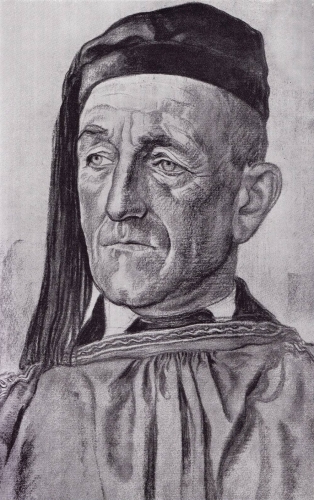 Of course workers who are replaced by machines can’t be allowed to starve. The products of machines have to be consumed by someone. Production can be automated but consumption cannot. It would be an absurdist dystopia if mechanization led to the starvation of workers, so consumption had to be automated as well. One set of robots would produce things, then another set of robots would consume them and add zeroes to the bank balances of a few lonely plutocrats.
Of course workers who are replaced by machines can’t be allowed to starve. The products of machines have to be consumed by someone. Production can be automated but consumption cannot. It would be an absurdist dystopia if mechanization led to the starvation of workers, so consumption had to be automated as well. One set of robots would produce things, then another set of robots would consume them and add zeroes to the bank balances of a few lonely plutocrats.


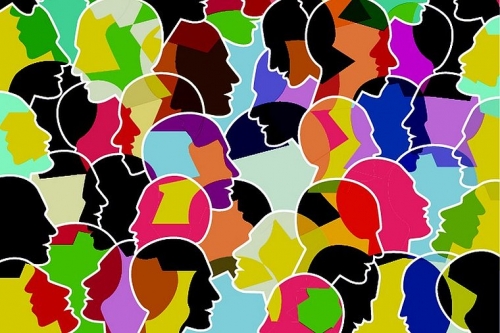

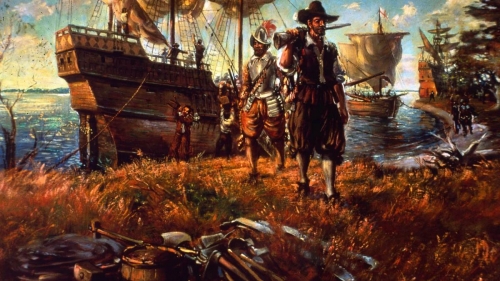

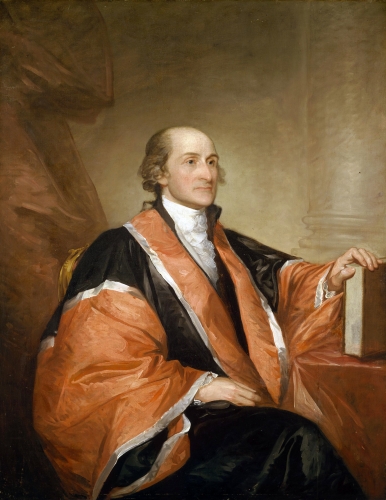


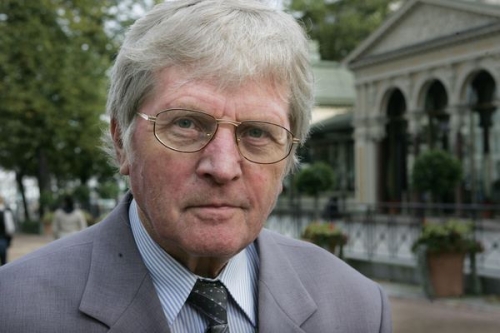
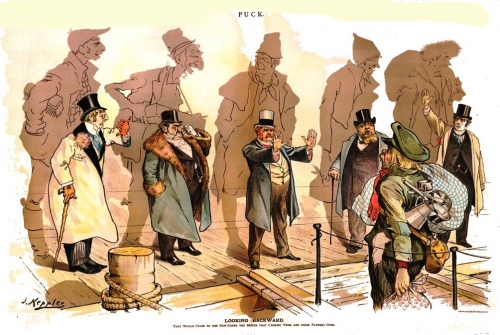
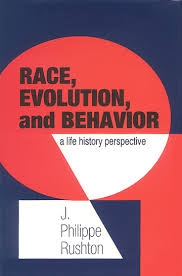

 Le Nationalisme Blanc est simplement l’idée d’une société où tout le monde autour de vous est votre parentèle. C’est une société où vous pouvez comprendre vos concitoyens et leur faire confiance. Où vous pouvez coopérer pour poursuivre le bien commun. Où vous aurez envie de participer à de grands projets, même si vous ne les verrez peut-être pas terminés de votre vivant. Où les gens plantent des arbres pour que les générations futures puissent avoir de l’ombre. C’est une société dans laquelle les gens ressentent une identité si forte avec l’organisme politique qu’ils sont prêts à sacrifier leur vie pour lui, s’ils le doivent. Mais le plus important, c’est une société dans laquelle vous pouvez vous sentir chez vous. C’est le but du Nationalisme Blanc : assurer des patries pour tous les peuples blancs.
Le Nationalisme Blanc est simplement l’idée d’une société où tout le monde autour de vous est votre parentèle. C’est une société où vous pouvez comprendre vos concitoyens et leur faire confiance. Où vous pouvez coopérer pour poursuivre le bien commun. Où vous aurez envie de participer à de grands projets, même si vous ne les verrez peut-être pas terminés de votre vivant. Où les gens plantent des arbres pour que les générations futures puissent avoir de l’ombre. C’est une société dans laquelle les gens ressentent une identité si forte avec l’organisme politique qu’ils sont prêts à sacrifier leur vie pour lui, s’ils le doivent. Mais le plus important, c’est une société dans laquelle vous pouvez vous sentir chez vous. C’est le but du Nationalisme Blanc : assurer des patries pour tous les peuples blancs.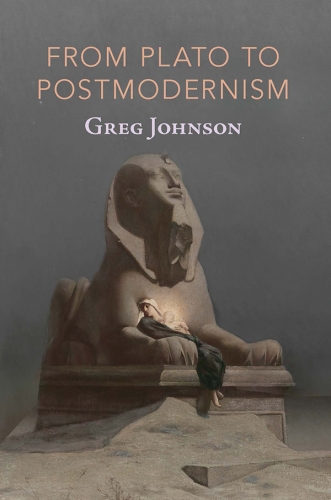 Notes
Notes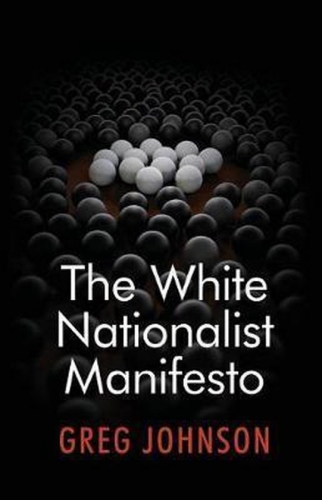

 del.icio.us
del.icio.us
 Digg
Digg

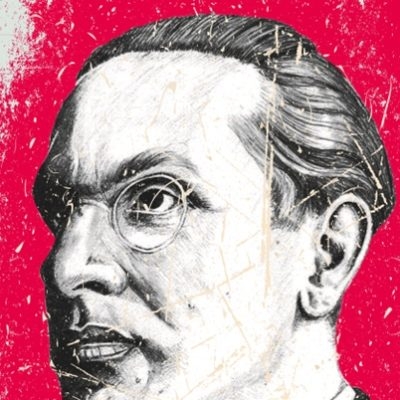

 Footnotes:
Footnotes: